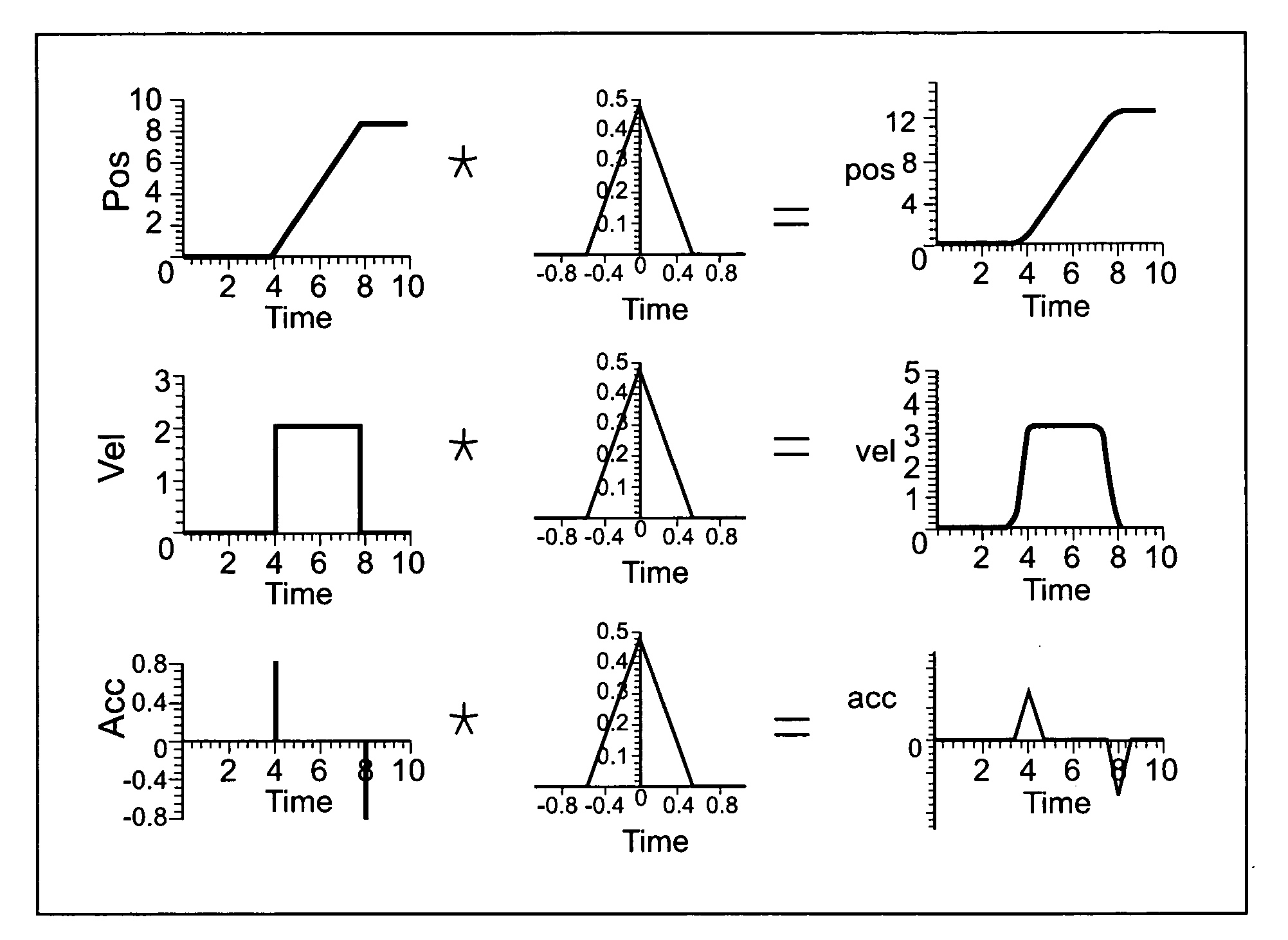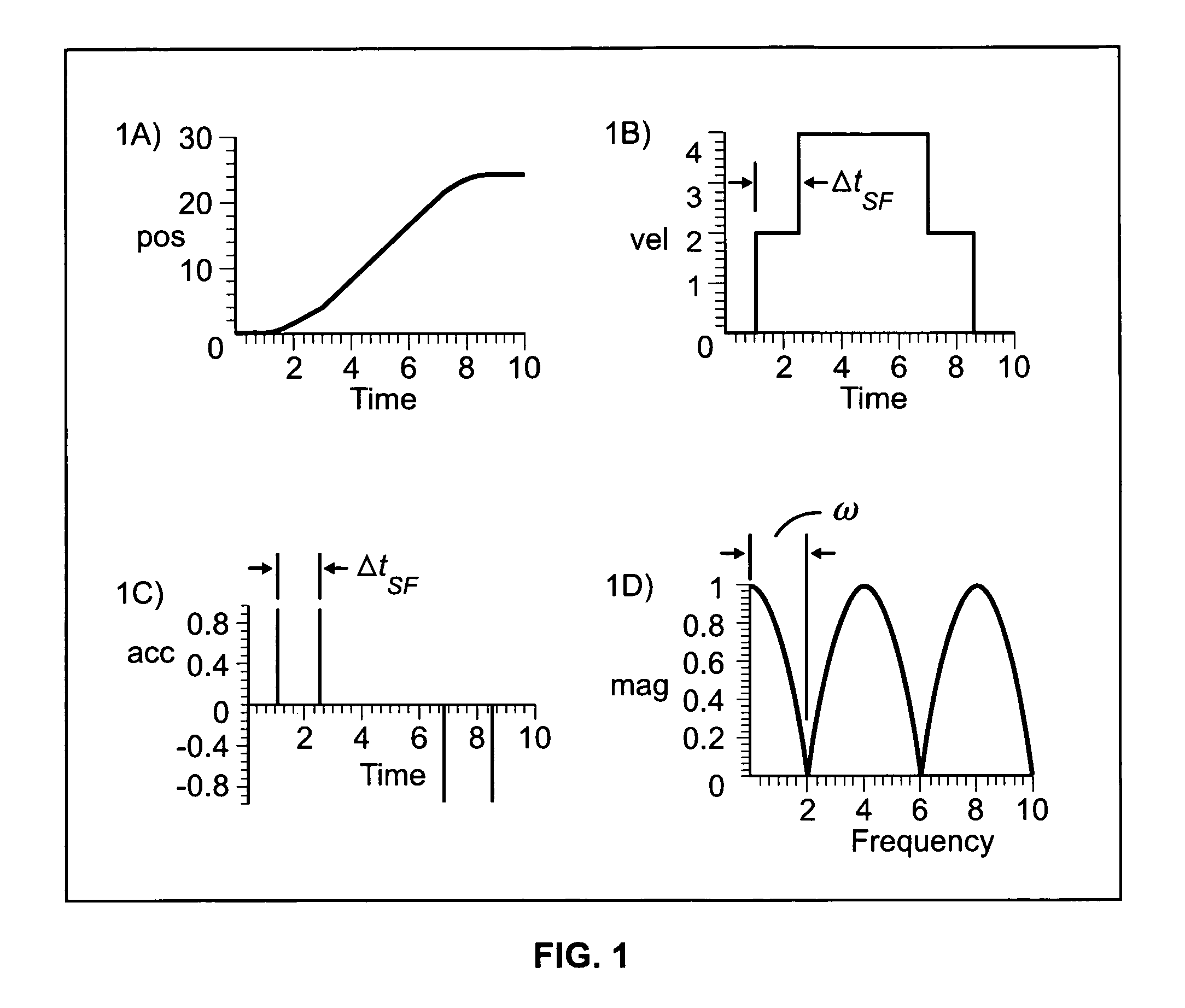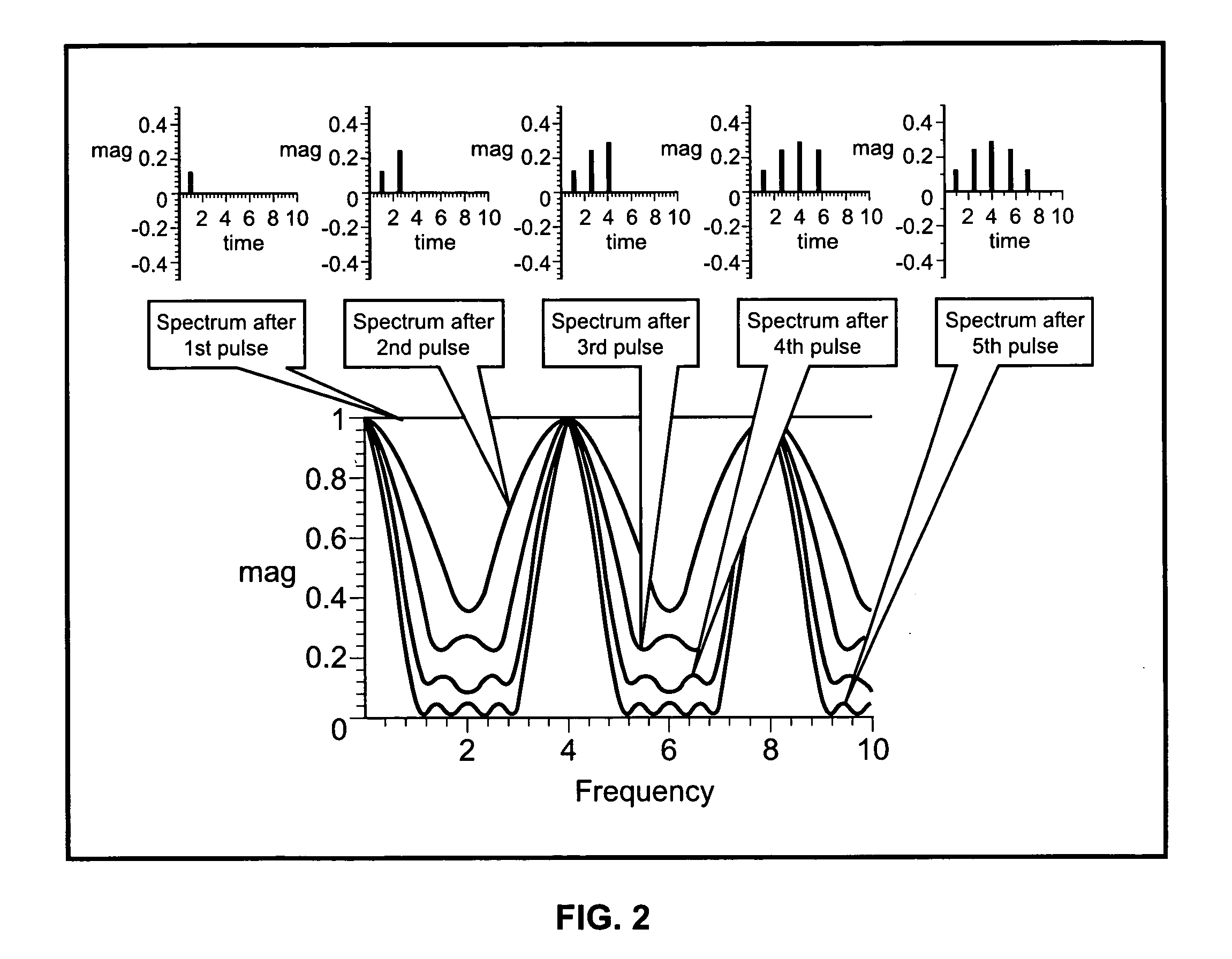Wideband suppression of motion-induced vibration
a wideband, motion-induced vibration technology, applied in the field of motion control, can solve problems such as vibration problems, low-end motor control use of current smooth profiles, and residual vibration, and achieve the effect of reducing the number of pulses
- Summary
- Abstract
- Description
- Claims
- Application Information
AI Technical Summary
Benefits of technology
Problems solved by technology
Method used
Image
Examples
Embodiment Construction
[0045]The present invention is a method to generate a position-time profile. For purposes of this application, unless otherwise stated, all references to profiles and profile generation will imply position-time profiles. Within the realm of the position-time profile is the position versus time, velocity versus time, acceleration versus time, and all higher derivatives of the profiles versus time. Reference to position profiles, for example, will imply position versus time, and velocity profiles will imply velocity versus time.
[0046]Using a convolution operator, complex motion profiles can be built up from simple components. The three basic components according to the present invention include (1) rate limited profile, (2) Dirac pulse, and (3) boxcar function. The underlying foundation of all of the profiles is a rate limited profile. As the foundation of each profile, a rate limited profile controls the transient or slew velocity of the profile. Filtered pulse-based shaping is added...
PUM
 Login to View More
Login to View More Abstract
Description
Claims
Application Information
 Login to View More
Login to View More - R&D
- Intellectual Property
- Life Sciences
- Materials
- Tech Scout
- Unparalleled Data Quality
- Higher Quality Content
- 60% Fewer Hallucinations
Browse by: Latest US Patents, China's latest patents, Technical Efficacy Thesaurus, Application Domain, Technology Topic, Popular Technical Reports.
© 2025 PatSnap. All rights reserved.Legal|Privacy policy|Modern Slavery Act Transparency Statement|Sitemap|About US| Contact US: help@patsnap.com



